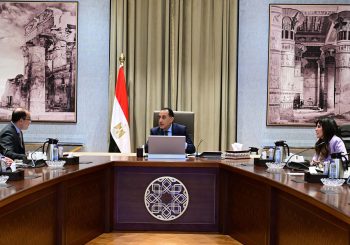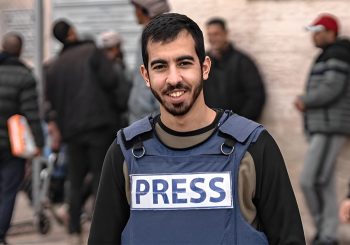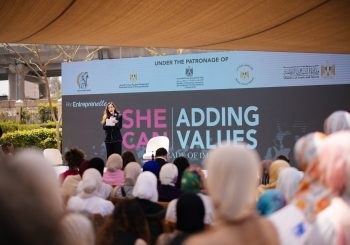Port Said, a city at the crossroads of international trade, linking routes between East and West, is also an important stop for birds migrating towards Africa. Located 167 kilometers northeast of Cairo, Port Said stretches along the Mediterranean coast and borders Lake Manzala to the south.
The Port Said International Bird Watching and Photography Festival is set to return for its second edition in February 2024 coinciding with the arrival of migratory birds seeking refuge during the winter season. After long, arduous migration trips, waterfowl, waders, flamingos, and countless other species rest in Egyptian wetlands before migrating to the rest of Africa.
The festival is marked as the first event of its kind, not only in Egypt but also in the Middle East. Organizers are extending an open invitation to nature and wildlife enthusiasts, as well as amateur and professional photographers, to a chance to capture glimpses of the beauty of Egypt’s rich biodiversity.
“The festival is a collaboration between the Port Said Governorate, the Egyptian General Authority for Tourism Activation, Ashtum Al Gamil Natural Reserve, and two NGOs: Nature Conservation Egypt (NCE) and the Wildlife Photography in Egypt Association. I am a member of the latter two associations,” Ahmed Waheed, one of the festival’s main organizers, tells Egyptian Streets.
Waheed explained that the festival’s origin can be traced back to a group of passionate photographers who faced challenges during their bird photography expeditions in Port Said, primarily due to the proximity of bird-rich areas to security zones.
The concept took shape after a meeting between one of the photographers, Hashim Morsy, and Mohamed Abu El Dahab from the Egyptian General Authority for Tourism Activation. Both recognized Port Said as an untapped treasure and proposed organizing a bird festival to the governor of Port Said, Adel Al Ghadban, who welcomed the idea.
Last year, the festival successfully held its inaugural edition, featuring events, seminars, bird-watching excursions, and photography. This year, the organizers have received the green light from Al Ghadban to expand their initiatives.
“The festival would not only attract visitors interested in bird photography but also engage them in awareness campaigns promoting domestic tourism. The hope is to expand to international tourism in the future,” he says.
The festival’s plans for this year encompass a wide array of activities. Notably, it will feature an open street exhibition showcasing bird photographs and informative content about various bird species – a first for Egypt.
Additionally, the organizers aim to involve differently-abled individuals in birdwatching and photography trips. Potential collaborations with educational institutions in Port Said are being considered to provide sign language interpreters for seminars, ensuring that attendees with physical disabilities can participate in birdwatching and photography excursions.
“Their pictures could potentially be included at the annual exhibition of the Wildlife Photography in Egypt Association, which is held every January,” Waheed says.
The festival will also feature workshops focusing on the importance of birds, their migration patterns, and the ethical aspects of bird-watching and photography.
These ideas are currently in the development stage, with logistics being fine-tuned.
In addition to the festival, Waheed and his team are working on a documentary film highlighting Port Said’s significance as a stopover for bird migration and a hub for commercial shipping. Both aspects are “closely connected” and crucial to Port Said’s livelihood and culture.
“Visitors can witness the arrival of various bird species from Eastern Europe and Western Asia. These migratory birds typically pass through North Sinai and settle along the Mediterranean coast. They seek resting places in wetlands and are particularly attracted to areas like the Zaranik Protected Area in North Sinai, serving as their primary stopover,” Waheed explains.
“They pass through the Port Fouad waterway, which is located close to Zaranik, at a distance of approximately 150 kilometers. This area is crucial in providing a resting place for flamingos, which visit in great numbers each year,” he adds.
Another important location is the meeting point of the Suez Canal with the Mediterranean Sea, characterized by its unique environmental conditions, including variations in water temperatures and the movements of ships, which contribute to the presence of numerous bird species.
At the heart of the migration route is the Ashtum Al Gamil Reserve, which lies approximately seven kilometers west of Port Said along the Mediterranean coastal road. A designated Important Bird Area (IBA), the protectorate boasts a rich diversity of bird species. Lake Manzala, in particular. is home to over 200 species of birds, both resident and migratory. The region has witnessed over 500,000 bird sightings, including flamingos, pelicans, wading birds, egrets, starlings, quails, and gulls.
The organizers are also discussing with the governorate the possibility of providing accommodation to attendees traveling to Egypt for the festival.
“The festival remains entirely free of charge, inviting all those interested in attending the event, exhibitions, and related activities during the specified period in Port Said to enjoy the experience,” Waheed says.







Comments (2)
[…] Port Said, a city at the crossroads of international trade, linking routes between East and West, is also an important stop for birds migrating towards Africa. Located 167 kilometers northeast of Cairo, Port Said stretches along the Mediterranean coast and borders Lake Manzala to the south…Read More […]
[…] post The Port Said International Bird Watching and Photography Festival is Returning for a Second Edition first appeared on Egyptian […]